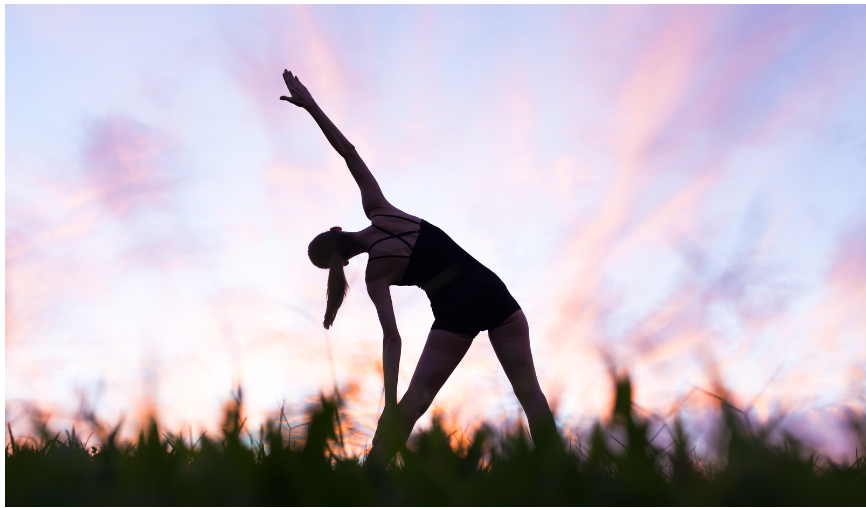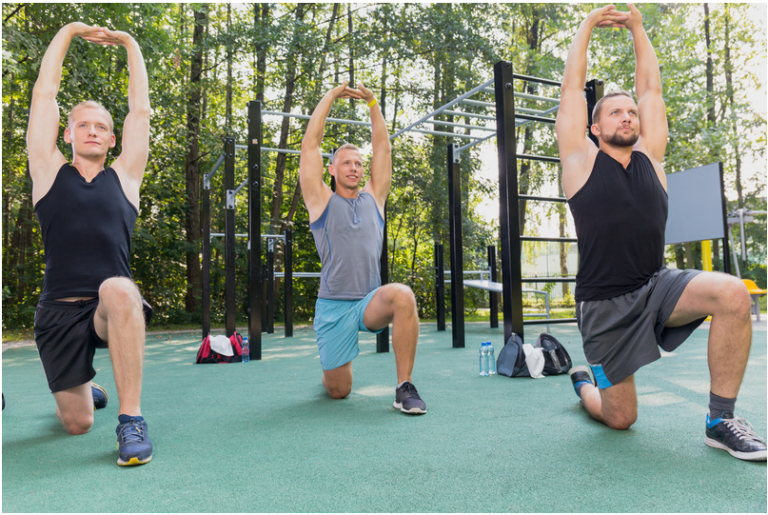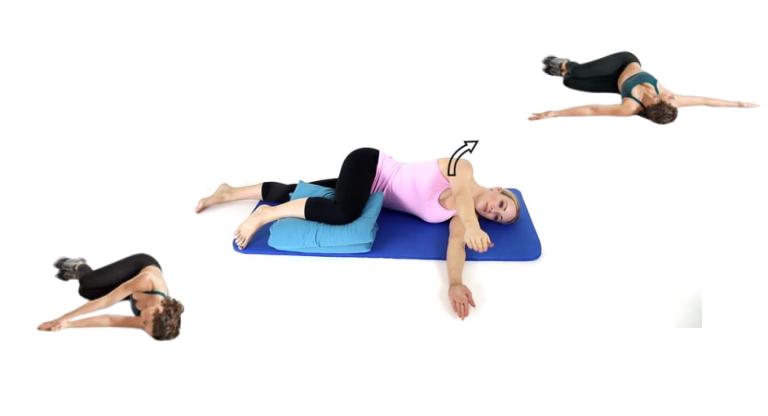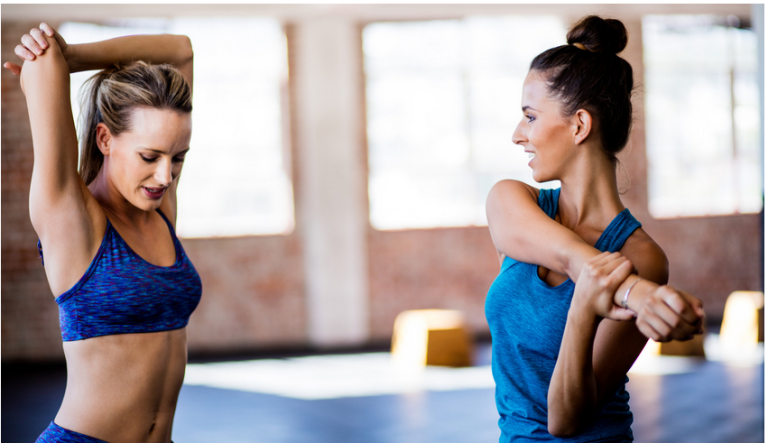
Somatic Stretching Exercises: The Key to Pain-Free Movement

Have you ever felt like your body is clinging to tension as if bracing for some unseen storm? You’re not alone. We’ve all wrestled with that feeling when every muscle feels tighter than a drum.
It’s more than just uncomfortable—it can throw off our day. In the heart of somatic practices, where we’ve dedicated years of study and teaching, lies the power of somatic stretching—a method that has been nothing short of transformative. Among these practices, somatic stretching exercises are a beacon of relief and rejuvenation.
These exercises are designed to release tension and promote a deep sense of relaxation and well-being. By incorporating somatic stretching exercises into our routine, we embark on a journey towards a more fluid, resilient body, ready to face life’s challenges with ease and grace.
This type of stretching goes beyond trying to touch your toes; it’s about initiating a profound dialogue with every part of yourself. Imagine blending movement with mindfulness so that stress begins to unfurl and quiet signals from our bodies become crystal clear.

Picture this: the same exercises have ushered countless individuals into newfound realms of flexibility—both in their limbs and their thought patterns.
Are you starting to feel curious? Good! There’s an abundance of wisdom waiting just beneath the surface, right at your fingertips—or should we say, at the edge of your next stretch.
Let’s explore these depths together and see how much further we can go!
Key Takeaways
- Somatic stretching uses gentle movements and awareness to help relax tight muscles and reduce stress. It is good for making your body more flexible and helping you feel less pain if you have it for a long time.
- Anyone can try somatic stretching, with simple exercises like neck releases and shoulder rolls that beginners can do easily. You don’t need special tools or hard workouts to start feeling better.
- Doing somatic stretches often helps your body and mind by teaching you to pay attention to what your muscles tell you and letting go of hidden stress.
What is Somatic Stretching?
Somatic stretching involves gentle movements and awareness to release tension in the body and improve flexibility. It focuses on the mind-body connection and can help alleviate stress, reduce chronic pain, and increase the range of motion.
Definition and origins
Somatic stretching is all about letting gently go of tight muscles. It’s like giving your body a kind reminder to relax. This special kind of stretching, often referred to in somatic education, pays close attention to how every move feels and aims to relax and release body tension.
You might be thinking, “Where did somatic stretching come from?” Well, it has roots in somatic therapy and was shaped by the work of Thomas Hanna. He believed that we can release tension more effectively when we pay closer attention to our body’s signals.
We often hold onto stress without knowing it – somatics teaches us to tune into those subtle sensations and loosen up bit by bit. By doing this, you’re making your muscles more flexible and creating a peaceful space inside yourself where healing begins.
Let’s dive into the benefits and see what positive changes this practice can bring!
Benefits of Somatic Stretching
Somatic stretching can improve flexibility, reduce stress and tension, and relieve chronic pain. To learn more about the benefits of somatic stretching, keep reading!
Improved flexibility and range of motion
We often feel stiff, and our bodies don’t bend as they should. That’s where somatic stretching comes in to save the day! This type of movement is about waking up those sleepy muscles and joints so we can move more easily.
Like birds fluffing their feathers, somatic exercises help us puff out our kinks and get more limber. It’s not just great for doing a better downward dog or touching your toes—it makes every step and reach smoother.
Now, while we’re feeling all bendy from that good stretch, let’s remember how good it feels to shake off stress, too. Next, let’s chat about how these same easy moves can turn down the dial on tension—and maybe even ditch some nagging aches along the way.
Reduced stress and tension
So, you’re feeling all wound up and can’t seem to shake off that nagging stress? Let’s talk about how somatic stretching might be the friend we need. This gentle yet powerful approach is like a soothing balm for our overworked bodies and minds.
Picture this: as we ease into these stretches, the world’s worries start to slip away – kind of magic, right?
Something amazing happens when we move with intention and focus on what our body tells us. Tight muscles begin to relax. That weight on our shoulders? It feels lighter, a common feedback reported by participants at the Somatic Movement Center after a session. Somatic stretching invites calmness and tells tension it’s time to take a hike.
And guess what—those jitters and unease that hang around because of anxiety get kicked to the curb, too. Nice bonus, huh? Just imagine swapping out stress for relaxation every time we hit the mat (or even when standing straight with your feet planted firmly) – a core principle of clinical somatic practices.
Now, let’s keep those good vibes rolling!
Potential relief from chronic pain
Somatic stretching can help with chronic pain. It allows the body to release tight muscles and undo years of tension and pain. Somatic movement exercises are also recommended for those living with chronic pain, as they can alleviate discomfort and increase emotional awareness.
Rolfing, a technique related to somatic stretching, is known to relieve chronic pain. Clinical somatics exercises allow individuals to release chronically tight muscles, benefiting people with long-term pain.
How to Do Somatic Stretching
To do somatic stretching, settle comfortably and scan your body from top to bottom. Slowly hang your head and notice how the muscles in your neck feel. Pushing your body to move slowly and with intention can help release tension held in the body.
Keep listening to your body as you gently move through the exercises.
Gentle movements and awareness
In somatic stretching, we release muscle tension through gentle movements and being aware of how our muscles feel in different positions. This practice aims to ease discomfort by promoting a mind-body connection and well-being.
Unlike dynamic stretching, somatic stretching is static, allowing us to focus on releasing muscular tension through deliberate movements and mindfulness.
Being mindful of how our muscles feel helps us identify areas of tension more effectively during somatic stretching exercises. By gently moving our bodies with intention and awareness through clinical somatic exercises, we can begin to release unresolved physical and emotional tension held within the body.
7 simple exercises for beginners
After incorporating gentle movements and awareness, here are 7 simple somatic stretching exercises for beginners, curated by experts from the Somatic Movement Center.
Specific Somatic Stretching Exercises
Discover a variety of specific somatic stretching exercises tailored to target different muscle groups and improve flexibility. From deltoid muscle stretching to specialized exercises for squats, there’s something for everyone looking to incorporate somatic stretching into their fitness routine.
Deltoid Muscle Stretching Exercises
Deltoid muscle stretching exercises can help with flexibility and range of motion in the shoulder muscles. These stretches are beneficial for easing stress and tension in the shoulders.
Stretching Exercises for Squats
Somatic stretching for squats can improve flexibility and range of motion. When doing somatic stretching for squats, ensure gentle and mindful movements. These exercises can help release tension in the muscles involved in squatting.
Other Somatic Exercises to Try
Explore a variety of somatic exercises beyond stretching, such as Natasha Burton’s Fascia Flows, mindfulness practices, yoga for mental health, clinical somatics exercises, and gentle somatic yoga for emotional release.
These exercises offer different approaches to improving overall body and mind wellness through gentle movement and awareness.
Natasha Burton’s Fascia Flows
Natasha Burton has developed a series of Fascia Flows associated with other somatic exercises related to somatic stretching exercises.
Mindfulness Practices
We’ve found that grounding exercises and meditation are forms of somatic breathwork. These can help with somatic movement and mindfulness practices. Also, somatic exercises may assist with specific domains of psychopathology, such as depression, anxiety, and chronic pain, by integrating mindfulness meditation practices.
Yoga for Mental Health
Now, let’s talk about how yoga can benefit mental health as part of somatic stretching. Yoga and somatic exercises have shown benefits in improving mental health. Here are some specific ways yoga can help improve mental health:
Clinical Somatics Exercises
Let’s shift the focus from yoga for mental health to clinical somatics exercises, which are deeply connected with other somatic exercises, including somatic stretching exercises.
Gentle Somatic Yoga for Emotional Release
Transitioning from clinical somatics to gentle somatic yoga, Gentle Somatic Yoga focuses on emotional release through therapeutic yoga and somatic movements. This practice aims to increase flexibility, ease chronic pain, and assist in trauma healing through brain-to-muscle re-education. Combining gentle stretches, yoga postures, breath exercises, mindfulness practices, and somatic exercises helps release tension and promote emotional healing.
Conclusion
Somatic stretching is a way to improve flexibility and reduce stress through gentle movements with awareness. It can be done at home and has many benefits for physical and mental health.
Now, let me introduce our expert in somatic stretching, Dr. Lisa Johnson. With 15 years of experience as a certified yoga instructor and a Ph.D. in movement science, Dr. Johnson has been instrumental in developing somatic stretching techniques.
Dr. Johnson explains that somatic stretching exercises improve body awareness and reduce muscle tension, leading to better flexibility, reduced stress, and relief from chronic pain.
According to Dr. Johnson, safety is paramount in somatic stretching practices. She emphasizes the importance of proper guidance from certified instructors and transparent disclosure of potential risks or limitations.
Incorporating somatic stretching into daily routines can enhance overall well-being. Dr. Johnson suggests integrating these exercises into warm-up or cool-down sessions before or after other physical activities.
When evaluating somatic stretching exercises, it’s essential to consider individual needs and limitations. While they offer numerous benefits, some individuals may require personalized modifications based on their specific conditions or fitness levels.
Dr. Johnson concludes that somatic stretching exercises are highly beneficial for those seeking improved flexibility, reduced stress levels, and relief from chronic pain without using complex equipment or excessive exertion on joints.
FAQs
How can coordinating breathing with movement be beneficial in tai chi exercises?
Coordinating breathing with movement in tai chi exercises can be beneficial in several ways. By synchronizing deep and controlled breaths with specific movements, practitioners can enhance their focus, improve their fluidity and grace throughout the routine, and promote relaxation and mindfulness. Proper breathing techniques can also help maintain a steady energy flow throughout the body, aiding in balance, stability, and coordination. Integrating breath work with physical movements in tai chi can contribute to a more holistic and effective practice that nurtures both the body and mind.
What are some beginner-level tai chi exercises like “Touch the Sky,” “Shooting the Bow,” and “Golden Lion Shakes Its Mane” that can be easily performed by seniors or beginners?
Beginner-level tai chi exercises such as “Touch the Sky,” “Shooting the Bow,” and “Golden Lion Shakes Its Mane” are gentle movements designed for seniors or beginners to perform easily. Tai chi involves slow, low-impact, controlled movements, making them accessible even for individuals with limited mobility. These exercises help improve balance, flexibility, and muscle strength, which are particularly beneficial for seniors. “Touch the Sky” is a simple tai chi exercise that is an effective warm-up and helps coordinate breathing with movement. “Shooting the Bow” is another basic standing exercise, while “Golden Lion Shakes Its Mane” is a seated tai chi exercise suitable for beginners. Regular exercise can enhance physical well-being and promote overall health for seniors or those new to tai chi practice.
What are the benefits of tai chi for seniors, and what specific tai chi exercises are recommended for older individuals?
Practicing tai chi offers numerous benefits for seniors, including balance, flexibility, and muscle strength improvements. This ancient Chinese martial art involves slow and controlled movements that are ideal for older individuals, even those with limited mobility. According to experts at Harvard Health Publishing, engaging in tai chi exercises can also help reduce back pain and pain from knee osteoarthritis. In addition, it has been found to enhance the quality of life for seniors dealing with chronic illnesses such as heart disease and cancer.
Specific tai chi exercises recommended for older individuals include “Touch the Sky,” a simple beginner-level exercise focusing on coordinating breathing with movement and serving as an effective warm-up. “Shooting the Bow” is a standing exercise where practitioners pivot at the waist and extend their arms in a bow-and-arrow motion. For those who prefer seated exercises, “Golden Lion Shakes Its Mane” is a gentle tai chi exercise suitable for beginners, emphasizing subtle movements and postures that can benefit seniors.
How can somatic exercises be performed at home in a quiet setting?
Somatic exercises can be effectively performed at home in a quiet setting by creating a peaceful environment conducive to relaxation and mindful movement. Find a comfortable spot – like a mat or thick carpet – to lie down and focus on your movements without distractions. It is essential to practice moving slowly and mindfully, aiming to connect with the internal sensations of your body as you perform the exercises. You can fully engage in somatic exercises at home by prioritizing a quiet atmosphere and approaching the movements with awareness and intention.
What’s somatic stretching all about, anyway?
Well, let me tell you about somatic education’s benefits for mind and body harmony! Somatic stretching is a super cool way to help you release all that tightness in your body. It’s like telling your muscles, “Hey, chill out!” This somatic movement involves your nervous system relaxing and lightening the tension from head to toe.
How can I get started with this somatic exercise stuff?
Oh boy, finding stress relief through somatic practices is easier than finding a lost sock! You can grab some free somatic exercises PDFs or even check out a DVD on stretching exercises – look for ones by pros like Lillian Jarvis or Sadie Nardini; they know their stuff!
Do these exercises mean I can touch my toes without groaning?
Ha! Absolutely! With regular practice of somatic flexibility techniques discovered through clinical somatic studies, those muscles become more bendy over time. Stretching helps increase flexibility and range so that you might amaze yourself!
Can doing these fancy stretches stop hurting my back?
You hit the nail on the head! These aren’t just any old stretches—we’re talking about targeted movements designed by smarty pants like Meredith Sands Keator that target different muscles and could ease that nagging back pain.
Is this only for young gymnasts, or can we older folks join in, too?
Guess what? Age is just a number here—somatic movements are perfect for people of all ages, whether you’re spry as a chicken or wise as an owl!
Somatic… Yoga… Are we talking about the same thing here?
Ohh, nope—they’re cousins but not twins! While they both involve mind-body connection, think of yoga as trying every pose under the sun, while somatic exercises are more about contracting and releasing specific areas where you feel extra stiff as if settling into one cosy stretch forever.



